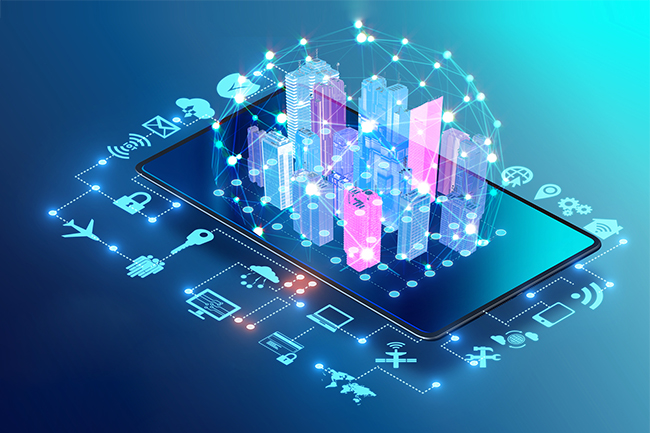Technological advancements in 5G enable substantial improvements in the Internet of Things (IoT) through accelerated and steady communication and expandable capabilities. 5G technology has the potential to unite billions of devices through robust data transmission while reducing delay times for enhancing intelligent systems throughout various industries. Through this evolution, technology will transform IoT operations and enhance the performance of residential and industrial applications.
Understanding 5G Technology
The evolution of the wireless communication network includes 5G, which was created to process abundant data while minimising latency response time. Unlike its predecessors (3G and 4G), 5G provides:
- Speeds under 5G operation reach rates 100 times faster than 4G.
- Millisecond response times have become possible through 5G, while real-time applications need this feature.
- The technology enables high connectivity that supports one million devices in a square kilometre area, thus promoting IoT expansion.
- The advancements enable IoT networks that require uninterrupted data exchange and instant processing functions.
The Growth of IoT in the Digital Age
The adoption of IoT continues to speed up as devices worldwide reach the billion mark. This technology allows smart devices to interconnect with other devices while managing industrial automation procedures. Key trends include:
The expectation for 2030 projects the number of IoT devices to reach 30 billion.
Devices linked to the IoT produce enormous amounts of data that artificial intelligence (AI), along with analytical tools, extract insights and automate operations from this data.
Plugins to new industry domains continue expanding IoT applications, exceeding consumer devices by reaching healthcare systems, manufacturing facilities, and transportation networks.
The growing complexity of IoT systems makes it essential to use the high-speed and low-latency functionality of 5G networks.
How 5G Enhances IoT Capabilities
5G, together with IoT, creates new opportunities because it enables the following:
Real-time data processing becomes faster because enhanced speeds allow devices to communicate nearly instantly.
The 5G networks allow many connected devices to operate simultaneously without experiencing network congestion.
Energy efficiency reduces the battery drain of IoT devices to boost their operational time, mainly when located remotely.
Improved device functionality is possible because reduced downtime and reliable network connectivity in critical applications are achievable.
These enhancements make 5G the perfect backbone for a truly interconnected world.
Key Use Cases of 5G-Enabled IoT
Smart Homes & Connected Devices
The network infrastructure of 5G supports the smooth unification of home technological devices, which enhances automated systems and security protocols while reducing energy usage. The speed of 5G connections ensures immediate operability in innovative assistant platforms, connected household devices, and home surveillance platforms.
Healthcare & Remote Monitoring
Hospital providers will use 5G to establish real-time remote patient monitoring systems and run smart wearable devices and robotic surgery procedures. Instant medical data transmission improves patient care services and expands healthcare provisions to distant locations.
Industrial Automation & Smart Factories
Combining IoT automation, predictive maintenance, and real-time monitoring through 5G allows manufacturers to boost their productivity levels.
Autonomous Vehicles & Transportation Systems
Self-driving cars and connected transportation systems need fast and immediate connectivity with minimal delays to share data across vehicles and traffic systems, which enhances performance and reduces accidents.
Agriculture & Precision Farming
Through 5G-powered IoT systems, clever irrigation techniques, real-time soil observation, and automated farm equipment improve productivity and reduce resource usage. Better network speed and reliability also give farmers access to data-based decision-making abilities.
Challenges in Implementing 5G for IoT
The rollout of 5G presents multiple difficulties for implementation together with its advantages.
The new 5G infrastructure setup demands expensive investments in hardware equipment and network deployment efforts.
The elevated number of connected devices through 5G makes cybersecurity threats more probable alongside data breach vulnerabilities.
Older IoT devices’ support for 5G functions creates an issue because they might need extensive hardware updates or modifications.
Governments need to manage their spectrum allocation effectively to stop network congestion from occurring.
The complete potential of 5G-powered IoT depends on properly resolving these obstacles.
Future Prospects of 5G and IoT
Technological progress will be spurred forward by the fusion between 5G and IoT. Future developments include:
The upcoming 5G technology will strengthen AI-enabled IoT applications, making connected devices increasingly intelligent and independent.
Edge computing processes data at device locations adjacent to endpoints instead of cloud facilities to achieve higher operational effectiveness with lower network traffic patterns.
5G establishes new industrial applications that allow the creation of smart grids while improving robotics operations across many business sectors.
The rising adoption of technology requires businesses and governments to prepare for a hyper-connected world that advances through the convergence of 5G and IoT.
Main Key Takeaways
- The speed, scalability, and energy efficiency make 5G a robust improvement for IoT.
- The market for IoT technology is steadily expanding through its use in residences, medical facilities, industrial facilities, and other sectors.
- The implementation of 5G faces impediments regarding infrastructure expenses and security matters, yet successful solutions are taking shape.
- New technological breakthroughs combining AI with IoT devices and edge computing computational networks will transform how we connect.
Frequently Asked Questions (FAQs)
How does 5G improve IoT devices?
5G provides faster speeds, lower latency, and higher device connectivity, enabling real-time communication and improved efficiency for IoT devices.
What industries will benefit the most?
5G-powered IoT will significantly impact sectors such as healthcare, manufacturing, transportation, agriculture, and smart homes.
What are the security risks of 5G and IoT?
Cyber threats like hacking, data breaches, and malware attacks increase as more devices connect to the internet. Strong cybersecurity measures are essential.
When will 5G-powered IoT become mainstream?
Adoption is growing, but widespread deployment depends on infrastructure investments and device compatibility improvements, which are expected within the next few years.
How can businesses prepare for this transformation?
Companies should invest in 5G-compatible IoT devices, strengthen cybersecurity, and explore automation and AI-driven solutions to stay ahead.








